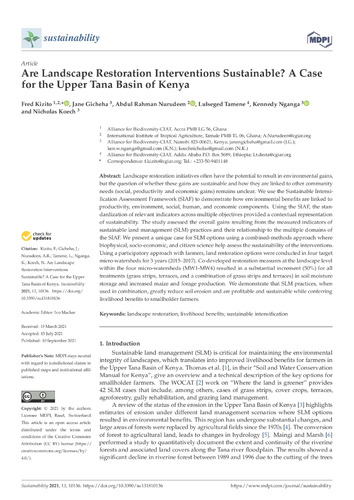Are landscape restoration interventions sustainable? A case for the upper Tana Basin of Kenya
Landscape restoration initiatives often have the potential to result in environmental gains, but the question of whether these gains are sustainable and how they are linked to other community needs (social, productivity and economic gains) remains unclear. We use the Sustainable Intensification Assessment Framework (SIAF) to demonstrate how environmental benefits are linked to productivity, environment, social, human, and economic components. Using the SIAF, the standardization of relevant indicators across multiple objectives provided a contextual representation of sustainability. The study assessed the overall gains resulting from the measured indicators of sustainable land management (SLM) practices and their relationship to the multiple domains of the SIAF. We present a unique case for SLM options using a combined-methods approach where biophysical, socio-economic, and citizen science help assess the sustainability of the interventions. Using a participatory approach with farmers, land restoration options were conducted in four target micro-watersheds for 3 years (2015–2017). Co-developed restoration measures at the landscape level within the four micro-watersheds (MW1-MW4) resulted in a substantial increment (50%) for all treatments (grass strips, terraces, and a combination of grass strips and terraces) in soil moisture storage and increased maize and forage production. We demonstrate that SLM practices, when used in combination, greatly reduce soil erosion and are profitable and sustainable while conferring livelihood benefits to smallholder farmers.

